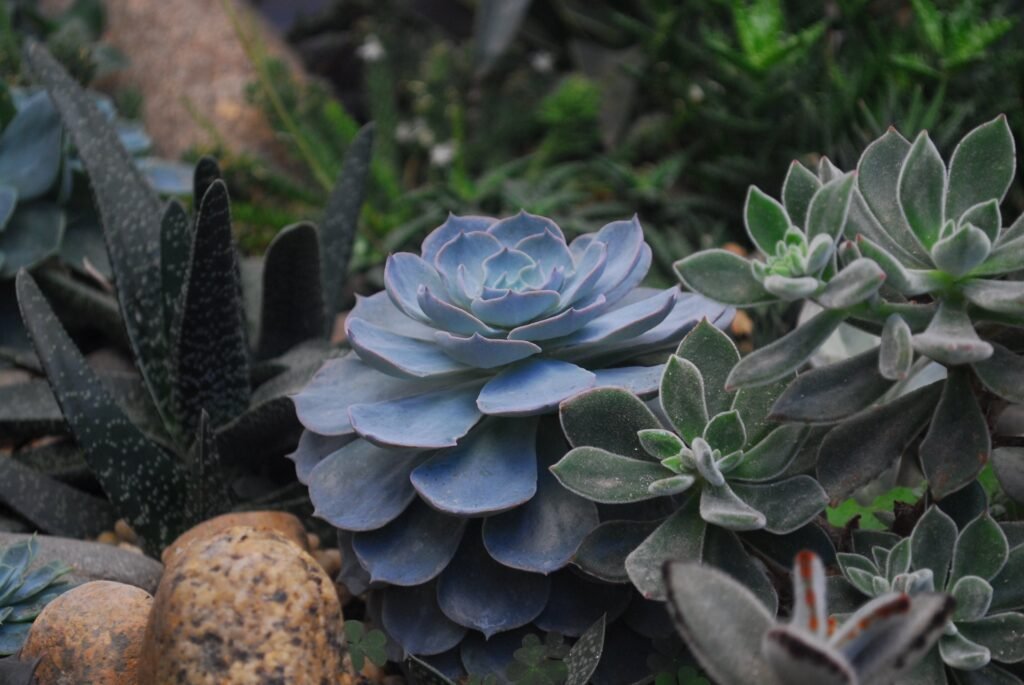How do I care for a succulent gift bouquet after the event? So you’ve received a stunning succulent gift bouquet at an event, and now you’re wondering how to keep these beautiful plants thriving. Don’t worry, caring for succulents is easier than you think. By providing the right amount of light, water, and attention, you can ensure that your succulent gift bouquet continues to bring joy to your space long after the event is over.

Watering
Watering Frequency
When it comes to watering your succulent gift bouquet, finding the right balance is key. Succulents are known for their ability to store water, so they don’t need to be watered as frequently as other plants. Generally, you should water your succulents every 1-2 weeks, but this can vary depending on factors such as the type of succulent, the size of the pot, and the environmental conditions.
Watering Method
To water your succulent gift bouquet, it’s important to use the right watering method. Instead of simply pouring water onto the leaves, which can lead to rot, it’s best to water the soil directly. A good method is to soak the soil until the water drains out from the bottom of the pot. This ensures that the roots receive the moisture they need without excess water lingering around the leaves.
Watering Amount
The amount of water you give your succulent gift bouquet depends on various factors such as the size of the pot, the type of succulent, and the environmental conditions. It’s important not to overwater your plants as this can lead to root rot. A general rule of thumb is to water your succulents until the soil is moist, but not waterlogged. Remember, succulents prefer to be slightly underwatered rather than overwatered.
Temperature
Ideal Temperature Range
Succulent gift bouquets thrive in temperatures ranging from 60 to 80 degrees Fahrenheit (15 to 26 degrees Celsius). This temperature range provides the optimal conditions for growth and ensures that the plants are comfortable. It’s important to avoid exposing the succulents to extreme temperatures, such as frost or intense heat, as this can cause damage to the plants.
Avoiding Temperature Extremes
In order to keep your succulent gift bouquet healthy, it’s crucial to protect them from temperature extremes. If your succulents are kept indoors, make sure they are not placed near drafts, heating vents, or air conditioning units. Similarly, if they are placed outdoors, ensure that they are not exposed to direct sunlight during the hottest part of the day or to frost during the colder months. By avoiding temperature extremes, you can help your succulents thrive.
Light
Amount of Light
Light is essential for the growth of succulents. They typically require bright, indirect light to thrive. Aim for around 6 hours of sunlight per day, but be cautious of exposing them to direct sunlight for extended periods as this can scorch the leaves. If you’re growing your succulent gift bouquet indoors, placing them near a window that receives plenty of indirect sunlight can be beneficial. If your succulents are not receiving enough light, they may become leggy or pale in color.
Sunlight Exposure
While succulents love sunlight, it’s important to protect them from intense, direct sunlight. This can potentially lead to sunburn and damage the delicate leaves. If your succulent gift bouquet is placed outdoors, ensure they are in an area that gets partial shade during the hottest part of the day. If indoors, consider using sheer curtains or blinds to filter the sunlight coming through the window. By providing the right amount of sunlight exposure, you can ensure the health and vibrancy of your succulents.
Avoiding Direct Sunlight
Direct sunlight can be harmful to succulents, especially during the peak hours of the day. To avoid damage, it is recommended to place your succulent gift bouquet in an area where they receive bright, indirect sunlight. This could be a spot near a window or a balcony where the plants are shielded from the direct rays. By avoiding direct sunlight, you can prevent scorching and ensure the longevity of your succulents.
Soil
Choosing the Right Soil
Succulents thrive in well-draining soil that allows excess moisture to escape. It’s important to choose a soil mix specifically designed for succulents or cacti. These mixes often contain materials such as perlite or pumice, which aid in drainage and prevent water from pooling around the roots. Avoid using regular potting soil, as it tends to retain moisture for longer periods, which can lead to root rot in succulents.
Fertilizing
Fertilizing your succulent gift bouquet is not necessary but can be beneficial if done appropriately. During the active growing season, which is typically spring and summer, you can use a balanced, low-nitrogen fertilizer diluted to half strength. Apply the fertilizer sparingly, once every 4-6 weeks, as succulents are relatively low-maintenance plants and too much fertilizer can cause damage. Remember to always follow the instructions on the fertilizer packaging and err on the side of caution when it comes to feeding your succulents.

Repotting
Determining the Right Time to Repot
Knowing when to repot your succulent gift bouquet is essential for their continued health and growth. Some signs that your succulents may need repotting include roots growing out of the drainage holes, the plant becoming top-heavy and unstable, or the soil drying out rapidly. However, it’s generally recommended to repot succulents once every 1-2 years, as they prefer to be slightly root-bound.
Repotting Process
When it’s time to repot your succulent gift bouquet, follow these steps to ensure a successful transition. First, gently remove the plant from its current pot, being careful not to damage the roots. Shake off any excess soil and inspect the roots for any signs of damage or rot. Next, select a new pot that is slightly larger than the current one, with drainage holes at the bottom. Fill the new pot with fresh succulent soil mix, place the plant in the center, and backfill with soil. Finally, gently press down the soil to secure the plant and water lightly to settle the soil. Allow the plant to adjust to its new pot for a few days before resuming regular care.
Pruning and Trimming
Removing Dead or Dying Leaves
Regular pruning and trimming of your succulent gift bouquet are essential for maintaining its health and appearance. Begin by removing any dead or dying leaves, as these can become a breeding ground for pests and diseases. Use sharp, clean scissors or pruning shears to ensure a clean cut, and make sure to dispose of any removed leaves properly to prevent contamination.
Shaping the Bouquet
If your succulent gift bouquet becomes unruly or starts to lose its desired shape, you can trim and shape the plants to your liking. This can be done by carefully removing excess growth or leggy stems. Make sure to trim just above a leaf node to encourage new growth. Take your time and be patient, as succulents tend to grow slowly. Regular shaping and pruning will help maintain a neat, attractive arrangement.

Pest Control
Identifying Common Pests
While succulents are generally resistant to pests, they can still occasionally fall victim to some common culprits. Mealybugs, aphids, spider mites, and scale insects are some of the pests that may infest your succulent gift bouquet. Keep an eye out for signs such as webbing, sticky residue, or tiny crawling insects on the leaves or stems.
Preventive Measures
To prevent pest infestations, it’s important to maintain good overall plant care. Avoid overwatering, as this can weaken the plants and make them more susceptible to pests. Regularly inspect your succulents for any signs of pest activity and address the issue promptly. Additionally, avoid overcrowding your succulents, as this can create an environment conducive to pest infestations.
Natural Remedies
If you notice signs of pests on your succulent gift bouquet, there are several natural remedies you can try. One common method is to mix a solution of water and mild dish soap and apply it to the affected areas using a spray bottle or cotton swab. Neem oil, diluted with water, is another effective natural insecticide that can be sprayed onto the plants. Remember to always test any remedy on a small area of the plant first and monitor for any adverse reactions.
Arrangement Maintenance
Positioning the Bouquet
Properly positioning your succulent gift bouquet is essential for its health and aesthetic appeal. Make sure to place the arrangement in an area that provides the right amount of light and temperature range mentioned earlier. Additionally, rotating the bouquet every few weeks will ensure even growth and prevent the plants from leaning towards the light source. By positioning your bouquet correctly, you can enjoy a beautiful and healthy display of succulents.
Cleaning the Container
Keeping the container of your succulent gift bouquet clean is important for maintaining a tidy arrangement. Dust and debris can accumulate on the surface of the pot, which can hinder airflow and create a breeding ground for pests. Regularly wipe down the container with a damp cloth to remove any build-up. Additionally, make sure to remove any fallen leaves or debris from the soil to prevent rot and pests.
Propagation
Methods of Propagation
If you’re interested in expanding your succulent collection or simply want to share the joy of succulent care, propagating your succulent gift bouquet is an exciting option. Succulents can be propagated through various methods such as stem cuttings, leaf cuttings, or offsets. Each method requires different steps, but in general, you will need to allow the cuttings or offsets to callus over before planting them in well-draining soil. With patience and care, you can create new succulent plants from your existing bouquet.
Troubleshooting
Common Issues and Solutions
Despite your best efforts, succulents can sometimes encounter issues. Here are some common problems and their solutions:
- Yellowing leaves: This can be a sign of overwatering or insufficient light. Adjust your watering routine and ensure the succulents receive adequate light.
- Leggy growth: Leggy growth occurs when succulents don’t receive enough light. Move the plants to a brighter location or consider using artificial grow lights.
- Root rot: Root rot is caused by overwatering or poor drainage. Adjust your watering habits and repot the plant in well-draining soil if necessary.
- Pest infestation: Follow the pest control methods mentioned earlier to address common pests. If the infestation persists, consider using organic insecticides suitable for succulents.
By diagnosing and addressing these issues promptly, you can help your succulent gift bouquet thrive and continue to bring beauty to your space.
In conclusion, caring for a succulent gift bouquet involves maintaining the right watering frequency, providing adequate light, using well-draining soil, and addressing any potential pests or issues that may arise. By following these guidelines and being attentive to your succulents’ needs, you can enjoy a vibrant and long-lasting gift that brings nature’s beauty into your home. Remember, succulents are resilient and adaptable plants, but they still require proper care to flourish. With a little love, attention, and the tips provided in this article, you can successfully care for your succulent gift bouquet long after the event.

